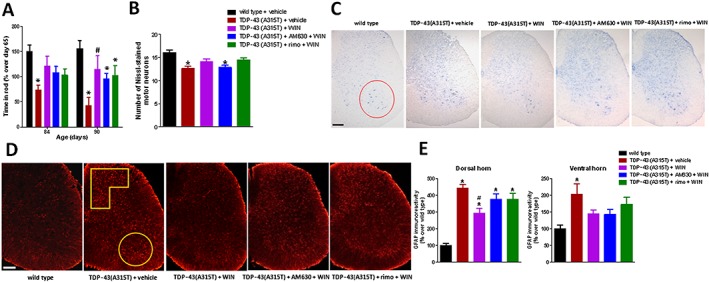Figure 4.

Rotarod performance (panel A) of TDP‐43 (A315T) transgenic and wild‐type male mice after the daily treatment with WIN55,212‐2 (5 mg·kg−1), in the absence or presence of the selective CB1 receptor antagonist rimonabant (5 mg·kg−1) or the selective CB2 receptor antagonist AM630 (5 mg·kg−1), or vehicle, from day 65 up to day 90 after birth. Quantification of Nissl‐stained motor neurons (panel B), including representative images, in which the area analysed in the ventral horn is marked by a circle (panel C; scale bar = 300 μm), and GFAP immunofluorescence analysis (panel E), including representative images (panel D; scale bar = 300 μm), in the dorsal and ventral horns (analysed areas are marked in the images), in the lumbar spinal cord in the five experimental groups once animals were killed 24 h after the last injection. In all cases, values are means ± SEM of 10 animals per group. Data were assessed by one‐way (Nissl staining and GFAP immunofluorescence) and repeated measures two‐way (rotarod) ANOVA followed by the Bonferroni test [*P < 0.05 vs. wild‐type; #P < 0.05 vs. TDP‐43 (A315T) transgenic mice treated with vehicle].
